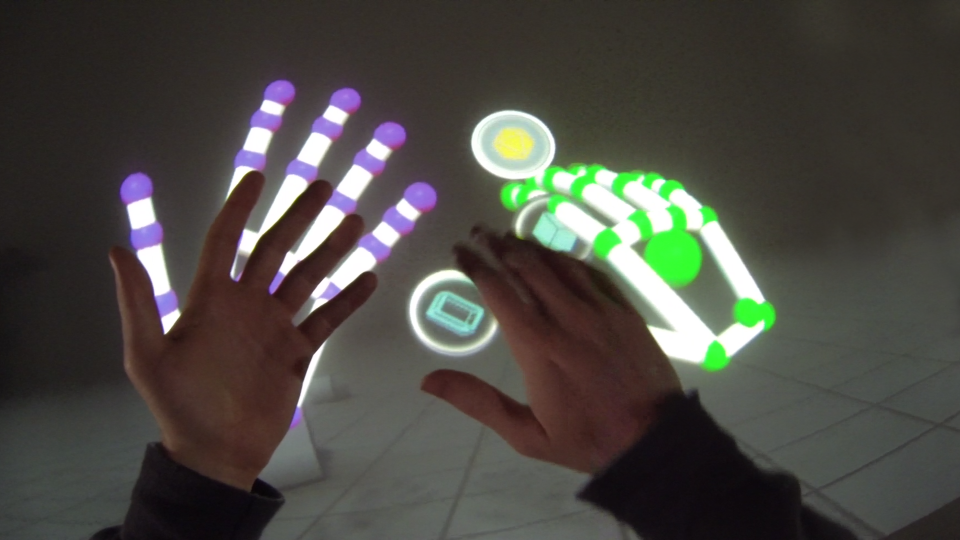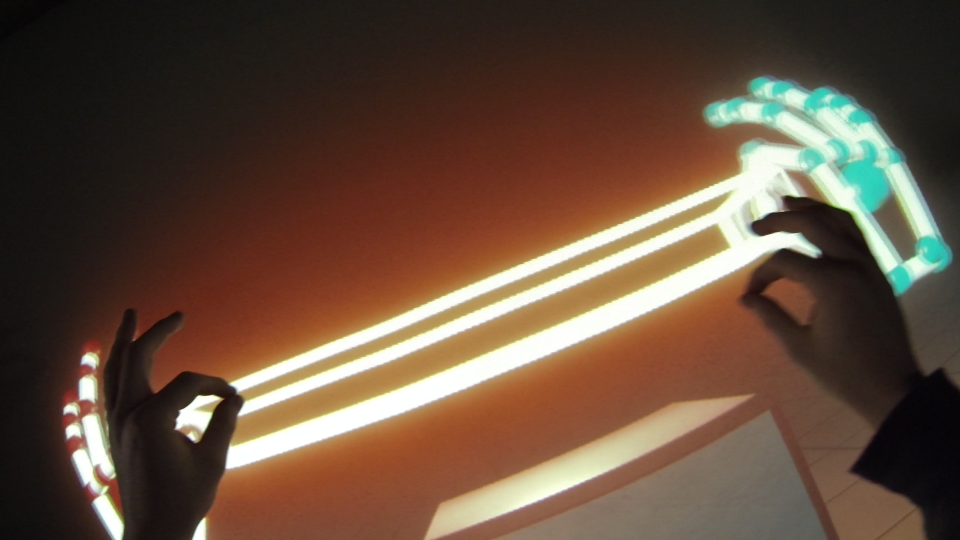Leap Motion's new motion-sensing tech is built for VR
It can even track fingers it can't see.

For several years now, Leap Motion has been working on bringing hand gestures to virtual reality. And it makes sense; using your hands to move digital objects is way more natural than fiddling with a controller. But to do this, you needed to strap one of the company's motion sensor peripherals in front of an existing VR headset, which is a little clunky to say the least. Plus, the sensor was still running the same software built for desktop PCs; a holdover from the days when Leap Motion's main focus was the aforementioned PC accessory. Now, however, the company is ready to take the next leap forward. Today it's announcing Orion, a brand new hardware and software solution that's built just for VR.
Prior to the Orion, the only headset to have the Leap Motion sensors embedded is Razer's OSVR, and even then it's available just as an optional faceplate. But since the Orion hardware is designed specifically for VR headsets, the hope here is that more hardware manufacturers will be more willing to embed Leap Motion's 3D motion sensors in their AR and VR headsets. The Orion hardware is thinner, smaller and in general just more compatible with a wider swath of headsets.
"The category that's most likely to adopt this is untethered mobile VR," said Michael Buckwald, Leap Motion's co-founder and CEO, due to the highly compact nature of mobile headsets. Plus, the use of your hands as the primary input method makes more sense when you don't have an external controller handy. Buckwald tells me that he's already deep in talks with several OEMs on embedding the new Orion hardware, and we can expect to see at least a few of them make it to market as early as this year.
But what's more powerful than the hardware is the software. Essentially an extension of Leap Motion's Interaction Engine, the new Orion software is designed to make hand gestures in VR feel more natural than ever before. "We've taken the learnings over the past few years and really built something from the ground up," said David Holz, Leap Motion's CTO and other co-founder. The result? "The hand tracking is better. Massively better."
Not only is the tracking faster and smoother, it's also a lot more sensitive. I tried out a demo of the Orion software and was surprised at how it was able to not only detect my visible hands, but also track fingers it can't see. If I'm holding my hand in a fist or if I'm holding up two fingers, it'll just figure out that I'm hiding the rest of my digits behind my palm. "It's guessing a little bit," says Holz, adding that it uses hints of pixels around the knuckles to figure out where the rest of your fingers are. This, he adds, is the difference between just waving your hand at something and being able to "grab" a virtual object.

I tried out the "Blocks" demo that I played around with a month ago, but this time with the new Orion software (You can see a demo of this in the YouTube video above). I immediately felt that my movements felt a little sharper and cleaner; that these floating skeletal appendages in front of me were almost as easy to control as my actual hands. I found that I was able to do actions that required a lot more precision, such as creating a catapult and balancing a bar on top of a block. I created spheres and threw it at targets, stacked blocks with ease and spun a cube on its side.
That's not to say that there weren't a few glitches of course; I didn't get the "grip" on boxes I would've liked and the controls aren't precise enough for me to create a game of Jenga. But considering this is a beta product, I was impressed at what I've seen so far.
Perhaps the best feature of the Orion software is that it's also compatible with older Leap Motion hardware. Starting today, developers can go to Leap Motion's website, download the software and try it out with preexisting peripherals just to get a feel of it and to start creating new applications.
"The company's always been focused on tracking fingers to try to solve the barrier between people and technology," says Buckwald. And now that the technology has gone into virtual worlds, it's even more relevant than ever.
"The holy grail of virtual reality is a sense of total presence and immersion," said Buckwald in a statement. "With Orion, we're enabling developers and OEMs to create that type of experience."






